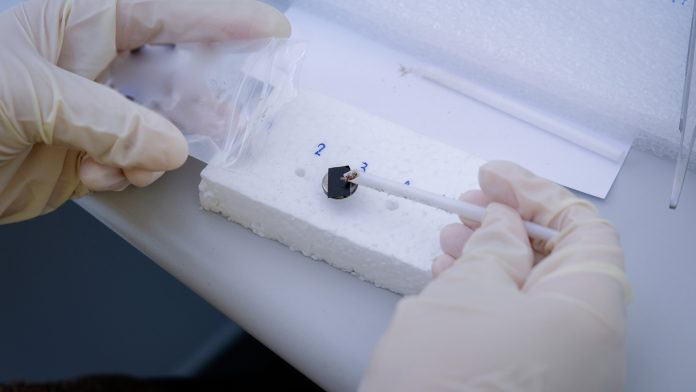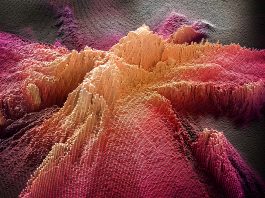A layered material developed by King Abdullah University of Science and Technology (KAUST), Saudi Arabia, acts as a precise temperature sensor by utilising the same principle used in biological ion channels.
Human cells possess various proteins that act as channels for charged ions. In the skin, certain ion channels rely on heat to drive a flow of ions that generates electrical signals, which we use as temperature sensors of our surroundings.
Inspired by these sensors, KAUST researchers prepared a titanium carbide compound (Ti3C2Tx) known as an MXene. Narrower than a single nanometre, MXene’s multiple layers are covered with negatively charged atoms, such as oxygen or fluorine.
KAUST postdoc Seunghyun Hong, part of the team behind the new temperature sensor, said: “These groups act as spacers to keep neighbouring nanosheets apart, allowing water molecules to enter the interplanar channels.”
Using techniques such as X-ray diffraction and scanning electron microscopy, the team discovered that adding water to the material slightly widened the channels between layers. However, when the material came in to contact with a solution of potassium chloride, these channels were large enough to allow positive potassium ions to move through the MXene and blocked the passage of negative chloride ions.
The team created a small device containing the MXene and exposed one end of it to sunlight. MXenes are particularly efficient at absorbing sunlight and converting that energy into heat. The resulting temperature rise prompted water molecules and potassium ions to flow through the nanochannels from the cooler end to the warmer part, an effect known as thermo-osmotic flow. This caused a voltage change comparable to that seen in biological temperature-sensing ion channels. As a result, the device could reliably sense temperature changes of less than one degree Celsius.
As the researchers increased the intensity of light shining on the material, its temperature rose at the same rate, as did the ion-transporting response. This suggests that along with acting as a temperature sensor the material could also be used to measure light intensity.
KAUST professors and project leader Husam Alshareef, said: “We envision that the MXene cation channels have promise for many potential applications, including temperature sensing, photodetection or photothermoelectric energy harvesting.”









